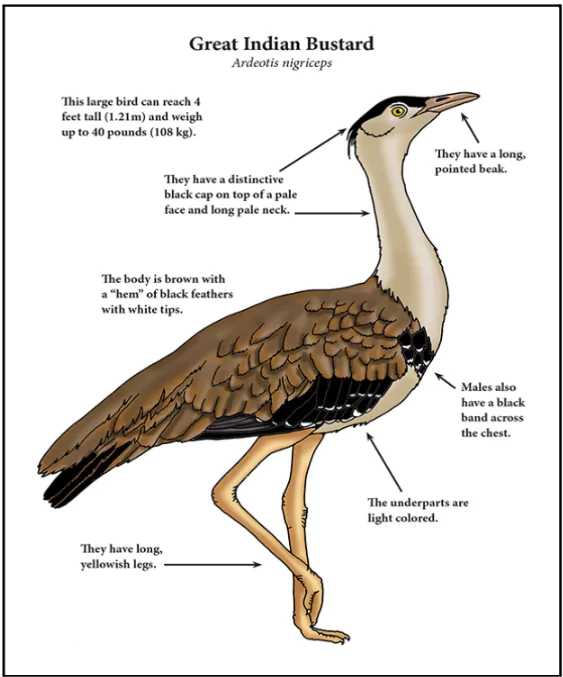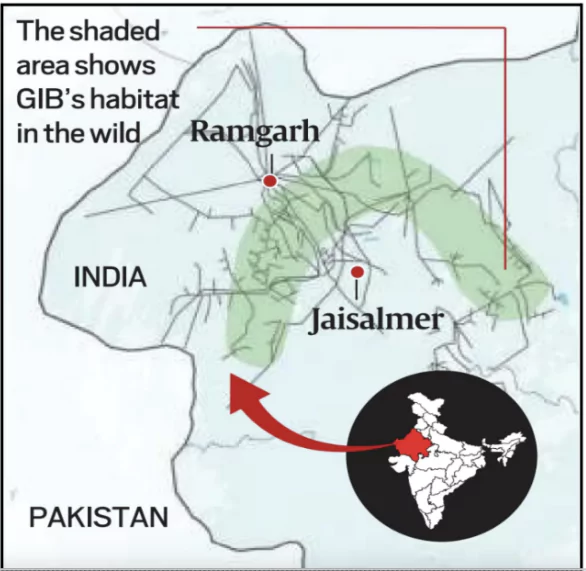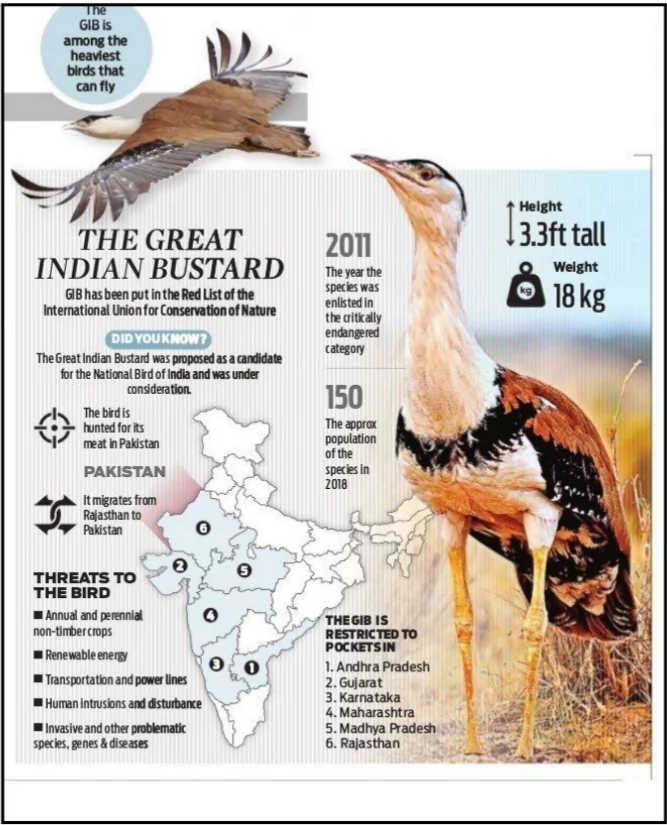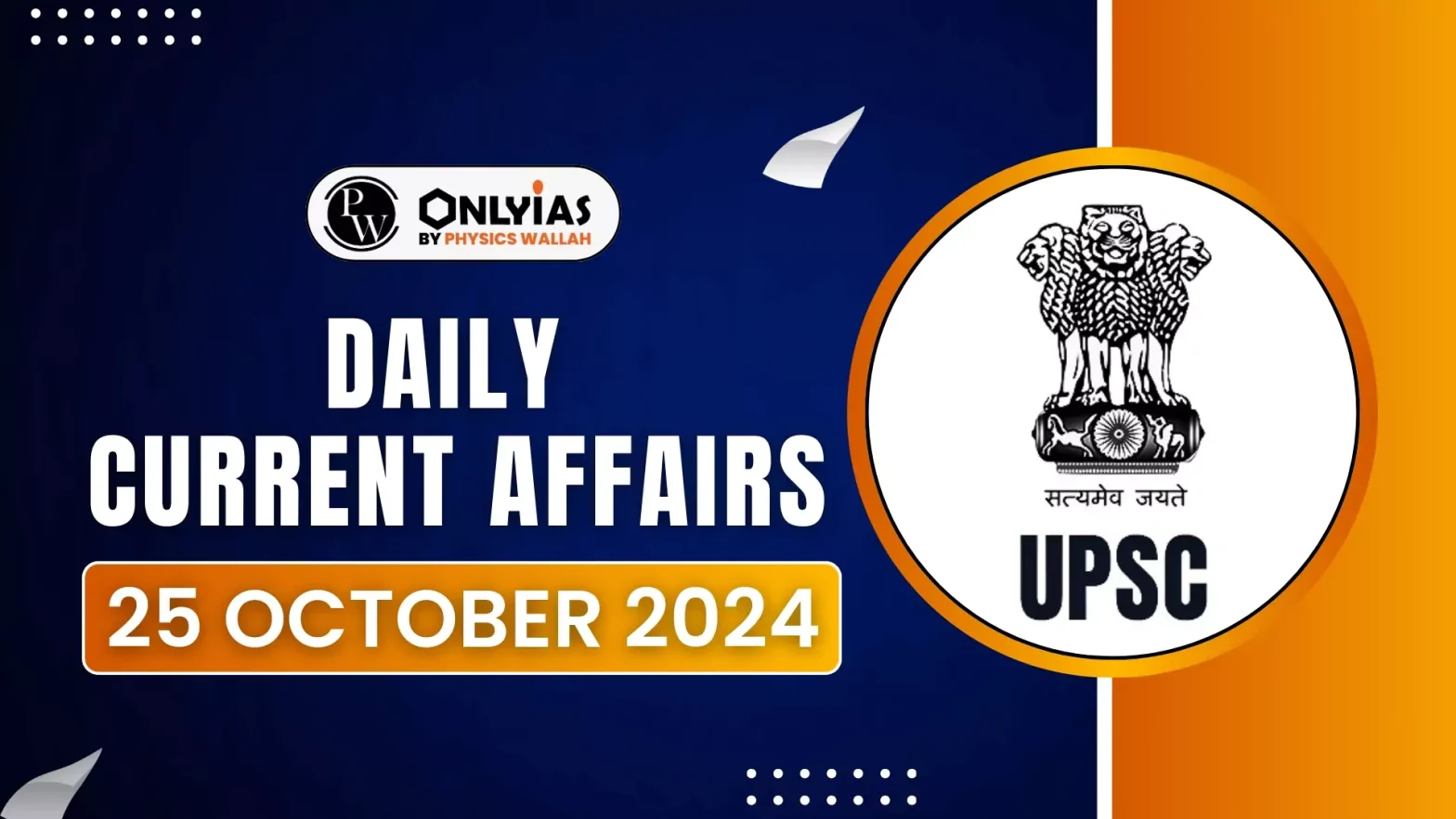In a historic first, a Great Indian Bustard (GIB) chick born through artificial insemination at Sudasari Great Indian Bustard Breeding Centre in Jaisalmer, Rajasthan.
- Conservation Milestone: This achievement is seen as a critical step for GIB conservation, with fewer than 150 of these endangered birds remaining, mostly in Rajasthan.
Enroll now for UPSC Online Classes
Artificial Insemination
- Artificial insemination (AI) is a medical procedure used to help with reproduction by deliberately introducing sperm into a female’s reproductive system (usually the uterus) without natural mating.
- It is commonly used in both humans and animals for various reasons, including overcoming fertility issues, selective breeding, and conservation of endangered species.
Process of Artificial Insemination Works
- Sperm Collection: Sperm is collected from a male donor, often through a medical procedure.
- Preparation: The collected sperm may be processed to increase its chances of fertilising an egg, such as separating higher-quality sperm.
- Insertion: The prepared sperm is inserted into the female’s reproductive tract using a syringe or a specialized catheter.
|
About Great Indian Bustard
- Habitat : It is a grassland species, endemic to the Indian subcontinent.Confined mostly to Rajasthan and Gujarat
- Small populations occur in Maharashtra, Karnataka, and Andhra Pradesh.
- Key indicator species of the grassland habitat: It is a key indicator species of the health of grassland habitats.
- Distinguished by its black crown on the forehead.
 Males have larger black crowns.
Males have larger black crowns.
- Diet: Omnivorous and feeds on grass seeds, insects like grasshoppers and beetles; Occasionally they even eat small rodents and reptiles.
- Conservation Status
- IUCN status : Critically Endangered
- Wildlife Protection Act, 1972 : Schedule I
- CITES: Appendix 1
Challenges in Conservation Of Great Indian Bustard
- Population Decline Factors:
- The GIB’s narrow frontal vision and large size make them particularly vulnerable to power line collisions.
- GIB Nesting: The GIB lays a single egg annually, which is large and laid on the ground, making it vulnerable to predators.
- The mother raises the chick for two years before laying another egg, meaning low natural reproduction rates.
- Power Line Challenge: A 2020 WII study in Desert National Park reported that power lines kill around 84,000 birds annually, including GIB.
 Although the Supreme Court ordered power lines in GIB re.
Although the Supreme Court ordered power lines in GIB re.
Conservation Efforts for Great Indian Bustard: National Bustard Recovery Plan: Plan to recover the species which was first started in 2013
- Bustard Recovery Project: Launched in 2016, planned by the Rajasthan government as well as the Environment Ministry.
- The Compensatory Afforestation Fund funded this project which consists of money collected for afforestation in lieu of diversion of forests for non-forest uses.
Conservation Breeding Process
- Conservation breeding began by collecting eggs from the wild
- Eggs are incubated artificially at the centres and hand-reared in the breeding centre itself.
- Later, chicks that attained adulthood at the centre have mated and given birth to the next generation
- Second generation of these birds are released into the wild.
|
Check Out UPSC NCERT Textbooks From PW Store

- Tripartite agreement: In 2018, a tripartite agreement was signed between the Ministry of Environment, Forest and Climate Change, Rajasthan Forest Department and Wildlife Institute of India (WII).
- They are working together on a GIB captive breeding program.
- The plan is to release captively bred birds into the wild in the future.
- Bustard Recovery Project involved the following conservation measures:
- Opening long-term conservation breeding centres (CBC) in Ramdevra and Sorsan
- Implementing field research projects such as telemetry-based bird tracking and population surveys
- habitats be buried, this has faced practical challenges.
- Recovery program: Prepared by Wildlife Institute of India (WII), an autonomous body under the Union Environment Ministry.
- Rewilding Bustards bred in ex-situ conservation centres.
- Developing artificial insemination techniques
![]() 25 Oct 2024
25 Oct 2024

 Males have larger black crowns.
Males have larger black crowns. Although the Supreme Court ordered power lines in GIB re.
Although the Supreme Court ordered power lines in GIB re.
